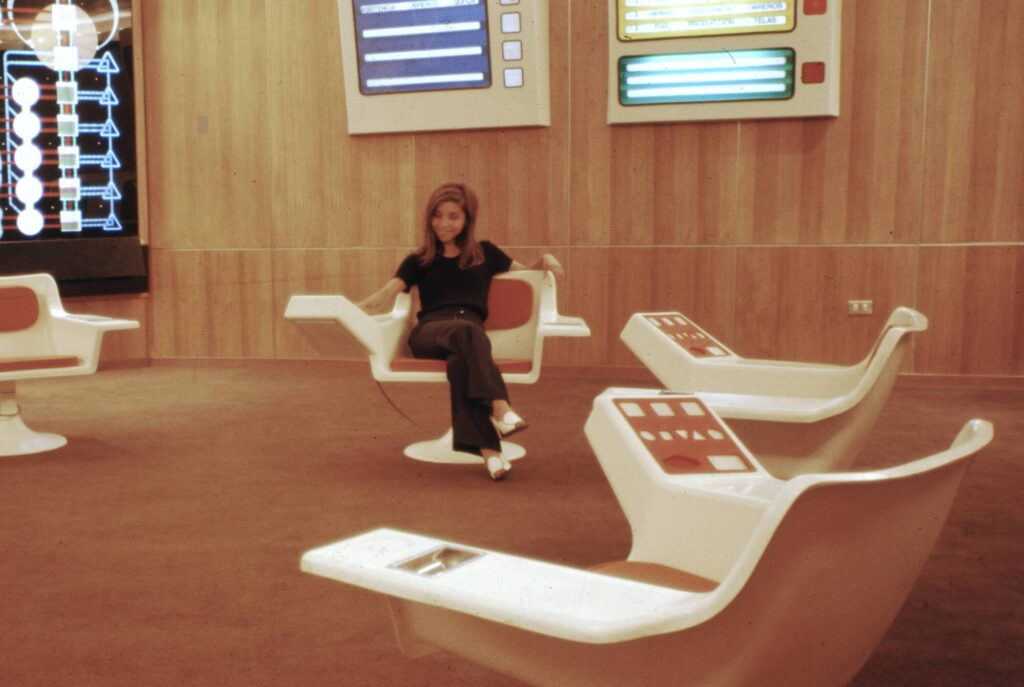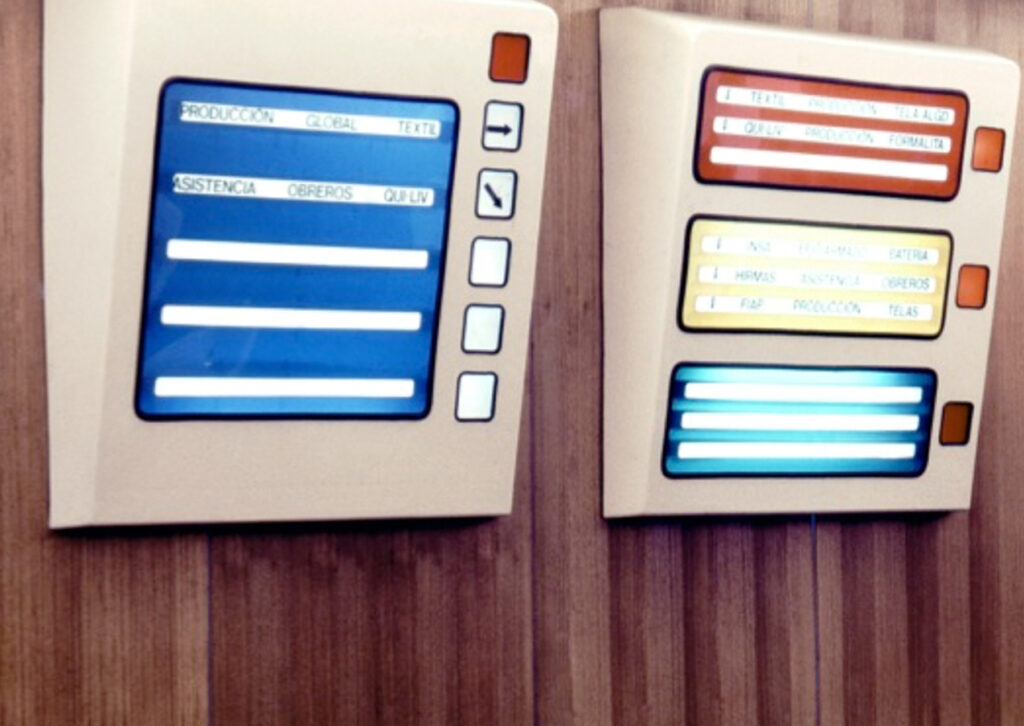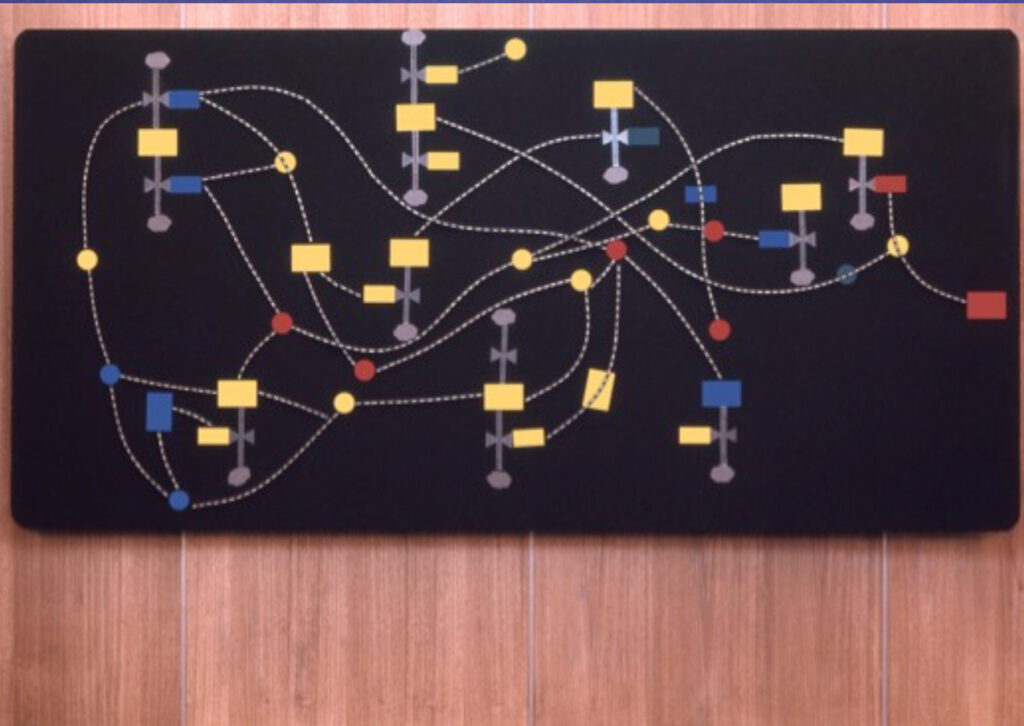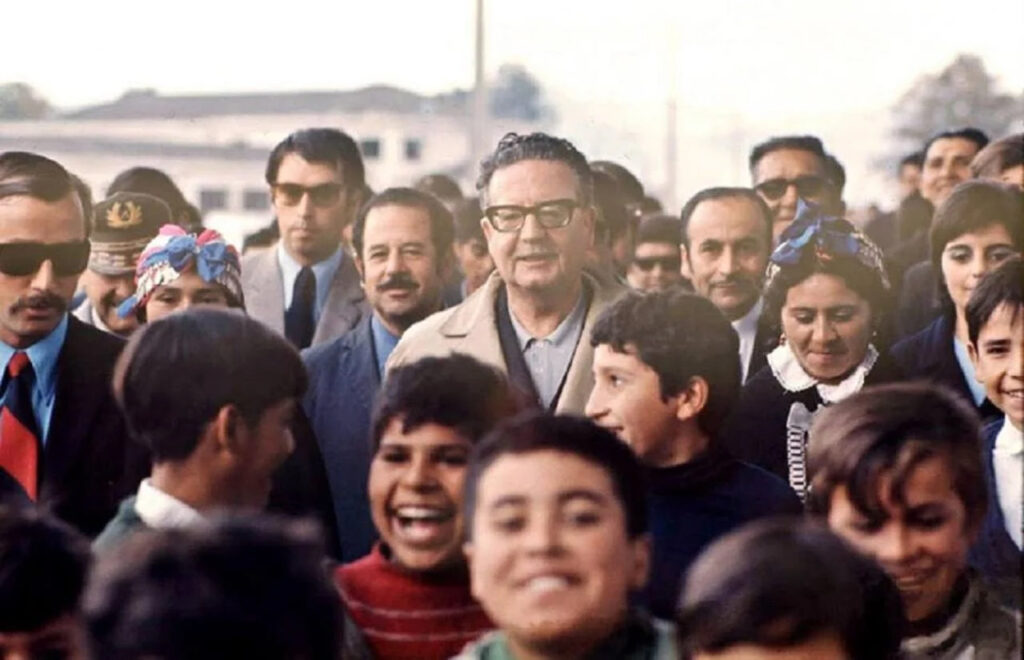WHAT WAS CYBERSYN?
Cybersyn was a short-lived, design-led experiment created to manage Chile’s nationalised industries between 1971 and 1973 under Salvador Allende’s first democratically elected government. Fifty years ago, it represented a revolutionary attempt to combine technology, participation, design, and data, placing workers at the centre of decision-making processes.

The name Cybersyn comes from Cybernetics and Synergy. Cybernetics emphasises understanding systems as a whole, focusing on how control, information, planning and decision-making work together. Synergy highlights the multiplying effect of collaboration, where collective action yields greater results than the sum of its individual parts.The projects
Cybersyn included several sub-projects such as Cybernet, Cyberstride and CHECO. At its core was the Operations Room (Opsroom), the project’s symbolic centre and the space for participatory action and collaborative engagement in decision-making.
The Opsroom
With its distinctive hexagonal shape, the Opsroom featured four display screens showing contextual information such as flow diagrams, factory photos and production data. Two additional screens highlighted urgent industrial issues through real-time factory data. A large cybernetic model was displayed in the room, while a magnetic board with iconic forms allowed users to manipulate components of the Chilean economy.




Accessible design
The Opsroom’s design prioritised accessibility. Instead of overwhelming users with raw numerical data, the design team used colours, symbols and diagrammatic relationships. Large buttons and simplified visual systems encouraged more intuitive understanding, making participation accessible to people from different backgrounds, including those without technical expertise.
The Chilean Road to Socialism
These design choices embodied Allende’s political ideals and the ‘Chilean road to socialism’. The Opsroom became a physical expression of a more equitable and participatory society, where design and technology were reimagined as tools for collective decision-making.

